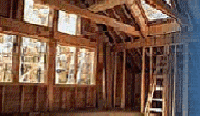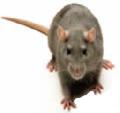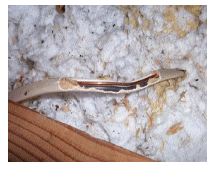Houston - Galveston Coastal Home Inspections I Infrared Thermography |
||
 |
|||
 |
|||
 |
|||
 |
|||||||||||
Rats and Rodent Damages PEX Water Lines Damaged By Rats
From Galveston to Dallas rats have chewed PEX water lines and exacerbated damages. A credible home inspector looking after your best interests will normally let you know if there is evidence of rodent activity in your attic. Periodic inspection for wood-destroying insects as well as for rodents and other pests is recommended by your local pest control company. |
|||||||||||
|
|||||||||||
Rodents can also transmit diseases to humans such as: Hantavirus Typhus Fever Infectious jaundice, Rat-mice dermatitis
Humans may become infected with hantaviruses through contact with rodent urine, saliva, or feces. Human infections of hantaviruses have almost entirely been linked to human contact with rodent excrement. |
|||||||||||
Electrical Wiring Damaged By Rats Cause House Fires Squirrels, mice and rats are all rodents, their teeth grow non-stop; therefore they must continuously chew to keep their This wire chewing habit is a potential fire hazard for your attic and home.Rodents, such as rats and mice, start fires by chewing on electrical wires that cause millions of dollars of structure damage each year. Another concern is the animal electrocuting itself by damaging the wires; this can be a fire hazard or cause an odor problem when the animal is killed and starts to decompose. |
|||||||||||
Rodents and Fires By Gordon E. Ivory, CFEI, CVFI, CFII, RL Insurance companies, adjusters and other real estate professionals need to be aware of the destruction that rodents can cause. Rodents, such as rats and mice, start fires by chewing on electrical wires that cause millions of dollars of structure damage each year. It has been estimated that rodents cause up to 20 percent of undetermined fires in the United States each year. As a professional fire investigator, I have investigated numerous fires over the years involving rodent infestation in everything from houses to cars to motorcycles and even lawn tractors. Mice and rats chew constantly because their teeth are always growing. They have incisor teeth that butt up against each other. They will chew through soft concrete, aluminum, wallboards, and plastic pipes. Field mice move undercover in the winter months and prefer to live near the warmth of electrical components. Insurance Concerns Most standard homeowner insurance policies contain a number of exclusions, including insect and rodent infestation. Homeowners are expected to take care of their homes, businesses or structures and deal with maintenance issues on their own, at their own expense. However, most insurance companies will cover losses that result from an unexpected loss or hidden damage. This means that if a rat or mouse or other rodent chews into electrical wires which results in a fire, the insured should under most cases be covered providing that the rodent problem was not noticeable. Another concern with rodents chewing through wires is electrocution and if the nest is next to a furnace, it can be ignited by the hot surface. Even after the insured has sustained a fire loss, make sure the structure is correctly boarded up as soon as possible, as this will discourage mice and rats from entering and causing additional damage. These rodents can also transmit diseases to humans such as typhus fever, trichinosis, plague, infectious jaundice, salmonella, bubonic plague and rat-mice dermatitis. Gray Mice Can Jump While doing your structure inspection be aware that field mice and rats, when they move indoors during the winter, can jump a vertical distance of twelve inches from the floor onto an elevated surface. They can jump a height of eight feet down to the floor without injury. They can run horizontally along pipes, wires, and ropes. They are excellent climbers and can run up almost anything without breaking stride, even walls. In a six-month period one pair of mice can eat about four pounds of food and produce some eighteen thousand fecal droppings. Rats can get into the structure through an opening of approximately one-half inch and mice through approximately a one-quarter inch hole. Your assessment of the risk must include the examination of the foundation, soffit and fascia for small holes. When you suspect a nest is present, never put your finger in the nest, use a pointer, rod or other items that enable you to inspect from a safe distance. If ever bitten, all bites must be treated by a doctor. Traps and Bait Most dwellings, even new construction, cannot be totally guaranteed to be rat or mice proof. But various safeguards can be used, which include but are not limited to, rodent insecticides, which predominately poison the rodents and cause death by internal bleeding. However, do not expect rats or mice to go out of their way to feed on bait, even though they do occasionally. Compared to rats, mice forage only a short distance from their nest - usually no more than 10 to 25 feet. The best idea is to locate the bait where it will be in the rodents normal line of travel. Traps are also effective but they do require a lot more skill and labor. Some of these traps include snares, cage traps, and glue boards. When using a baited trap, remember that cheese is not a favorite food of mice or rats. They will eat it but there is a lot of other food that they prefer. Mice prefer cereal, grains, nuts, birdseed, dog food, and other related foods. Peanut butter is great to put on traps. The mice like it and will have trouble stealing it. During your risk assessment look for traps and poisons along with the remains and skeletons of rodents, this could be an indication of past or current infestation problems. It is also important to note that rats and mice do not need a great deal of water since they get it from the food they eat. Carry a small portable black light during the inspection to help assess the extent of mice and rat infestation, their urine will glow fluorescent in color. There are some beneficial aspects of mice and rats since they provide an essential food source for owls, hawks, and other predatory birds and animals. Mice and rats are also consumers of weeds and insects but their diet consists of just about anything. About the Author Investigator Ivory is a Certified Fire and Explosion Investigator (CFEI), Certified Vehicle Fire Investigator (CVFI), Certified Fire Investigator Instructor (CFII), and a Forensic locksmith. He is the owner of GEI Professional Investigations in Cortland, New York and has investigated over 2,800 fires during his career. |
||
ICC/IRC Combination Code Certified R5 Inspector - 5188826 County (IRC) Building Inspections - Texas HB2833 Texas Real Estate Commission Texas Real Estate Commission Texas Professional Real Estate Inspectors Association #435 -MI Coastal Inspections; Bulkheads, Piers, Docks, Boat Houses |
||

"Don't worry honey, it's a 30 year roof". Wrong!
When a home is built the usual builder has a one-year warranty. That includes the roof. The roof covering manufacturer does not warrant the installation or for roof leaks. If someone makes such a claim then they are usually trying to sell you something. Shingles do not have manufacturer tags or markings on them. Who are you going to call anyway? Additionally, roof contractors are not licensed in Texas. Anyone can be one today and gone tomorrow.
Welcome to the southern United States hot/humid climate. Generally, asphalt (composition) shingles have a typical lifespan of 12-15 years in hot/humid environments and regardless of its material age and condition insurance companies tend to have their own idea of shortened lifespan when it comes to insurability and/or depreciation. With lack of proper attic ventilation you can take off 3-5 years of estimated life and lack of proper ventilation voids any manufacturer material warranty.
From Dallas to Galveston, El Paso to Beaumont many home inspectors may spend an hour and a half on a home when it should take around 4 hours or so to properrly follow the statewide inspection standards. These inspection flippers usually do not want you at the inspection and the experienced inspectors know why. Whether they own a ladder or even use one is questionable. At least reputable inspectors will include roof photos in a report as documentation that they were on the roof.
If you live in a coastal Texas county then you have the added Texas Windstorm Insurance Association that, if you watch the news, may be somewhat evil when it comes to paying windstorm claims even on new roofs. Roofs blow off in high wind zones. Shinges are not listed/rated/warranted for high windspeeds. (Shingles in coastal area may be limited to 110 m.p.h. speeds based on a 3 second gust. If you live in a 120 or 130 wind zone then you exceed the shingle listing/rating/warranty.)
What wears out the composition shingle? The actual life of a composition roof will vary, depending on a number of interrelated factors besides the quality of the material and the method of installation such as but not limited to; exposure to sunlight, slope of the roof, ventilation of attic spaces, and color of the shingles; (dark shingles achieve lower life spans) and biological attacks. Dark shingles have a significant amount of thermal mass. They soak up the sun’s heat. The darker the shingle the hotter the roof gets.
Additionally the thicker the composition shingle the more heat it absorbs and stores and is negatively affected by this heat. This means that not only do they soak up the sun’s heat like a sponge, but they also hold a tremendous amount of this heat to after sunset and then release this heat into the structure at night. Testing done by Florida Solar Energy Center showed that over 20% of the typical home cooling load comes from heat gain. The average 2000 sq. ft. roof can receive over 24 million BTUs of the sun’s radiant heat per year. (That equals 2,000 tons of air-conditioning!)
Additionaly with dark colored shingles the minimum standard of attempting to ventilate (i.e. cool down) an attic space and rood deck may be unrealistic which has a shortening effect on shingle life.
Granule loss of shingles starts from the time of installation and increases with age from heat and erosion from water running down the roof slope. The granules are designed to deflect the deteriorating ultra-violet rays of the sun and heat and provide a fire-resistance. The fire-resistance of shingles decreases with the rate of granule loss. Roof rock granule loss, exposed fiberglass matrix at edges and brittleness of the roof covering is indicative of the roof covering in its last stage of serviceable life and you are recommended to budget for replacement.
 If you have the PEX water lines installed into many new built homes care should be taken as they can be easily damaged by rats or other rodents to cause significant water damages. This is not the case with copper pipes or CPVC pipes but with the PEX water lines being a softer material than metal or cpvc it is ripe for chewing.
If you have the PEX water lines installed into many new built homes care should be taken as they can be easily damaged by rats or other rodents to cause significant water damages. This is not the case with copper pipes or CPVC pipes but with the PEX water lines being a softer material than metal or cpvc it is ripe for chewing. 
 teeth short and sharp. They like any surface that they can gnaw on. Wood is often preferred, but they will also chew on electrical wires, duct work and other materials. It has been estimated that rodents cause up to 20 percent of undetermined fires in the United States each year.
teeth short and sharp. They like any surface that they can gnaw on. Wood is often preferred, but they will also chew on electrical wires, duct work and other materials. It has been estimated that rodents cause up to 20 percent of undetermined fires in the United States each year. 